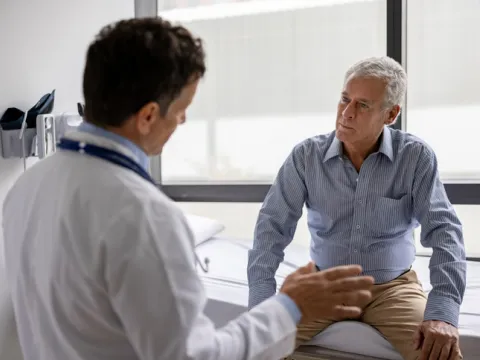- AdventHealth

An active childhood can mean frequent bumps and bruises for many children and young athletes. But when your child is experiencing intense pain or limited mobility, it can be hard to know how to find them the treatment they need.
Whether your child has been living with years of scoliosis or suffers an acute sports injury, the physicians at the AdventHealth want to help. We treat a wide range of conditions including sprains, tendonitis, fractures, scoliosis, ligamentous tears, and concussions. Our experienced team is to heal your young athlete and help get them back in the game.
Here's how to best recognize injuries in your active child and get them back on the path toward health and wellness.
When to See a Doctor
Soreness is typically a part of athletics, but pain that causes a limp, limited range of motion, awakening at night and inability to engage in physical activity is worrisome. Swelling after injury is also concerning.
Children's bones are particularly susceptible to injury because of growth plates (physes) and secondary growth plates (apophyses) in growing bone. Injury to children's growth plates may lead to growth arrest or growth deformity. Early recognition and treatment of these injuries is very important.
There is one injury that can result from collision or impact: The pediatric brain may be more susceptible to concussion, and the concussion course may be prolonged in young athletes. Concussions or suspected concussions should always be evaluated by a physician who is skilled in concussion evaluation and treatment.
Identifying the Issues
How do we check your child for the presence of an orthopedic injury? Often, its a specialists expertise paired with advanced imaging technology.
Radiographs (like X-rays) are typically used in the evaluation of most musculoskeletal injuries. But there is no substitution for keen clinical diagnosis skills, including pertinent history and clinical examination. If further imaging is needed, AdventHealth has many locations and partners where CTs and MRIs can be obtained.
In an effort to make your child as comfortable as possible, many imaging facilities have video goggles which allow young children to watch a movie during their procedure. These goggles have decreased the need for anesthesia in young children during routine MRIs.
Personalized Treatment Programs
Our initial approach to treatment is often non-invasive. We have many options for non-operative fracture treatment including waterproof casts and waterproof splints. We take both the child and the family into account when making treatment decisions and a plan of care.
We know how difficult it is for your child to be sidelined. Depending on their injury, we try to allow them to be as active as possible while healing. With the help of highly trained physical and occupational therapists at your local AdventHealth facility, we create rehab plans that are custom to your child's injury and physical activity.
A multidisciplinary approach helps our teams create the most comprehensive care plan for your child. With the coordinated care at AdventHealth, we often participate in physician collaboration to ensure preeminent treatment of our patients.
If you're concerned that your child may have an orthopedic issue, let us help get you answers. The sooner they see a specialist, the sooner they can get back to living their best life. To request an appointment, find a location near you.




